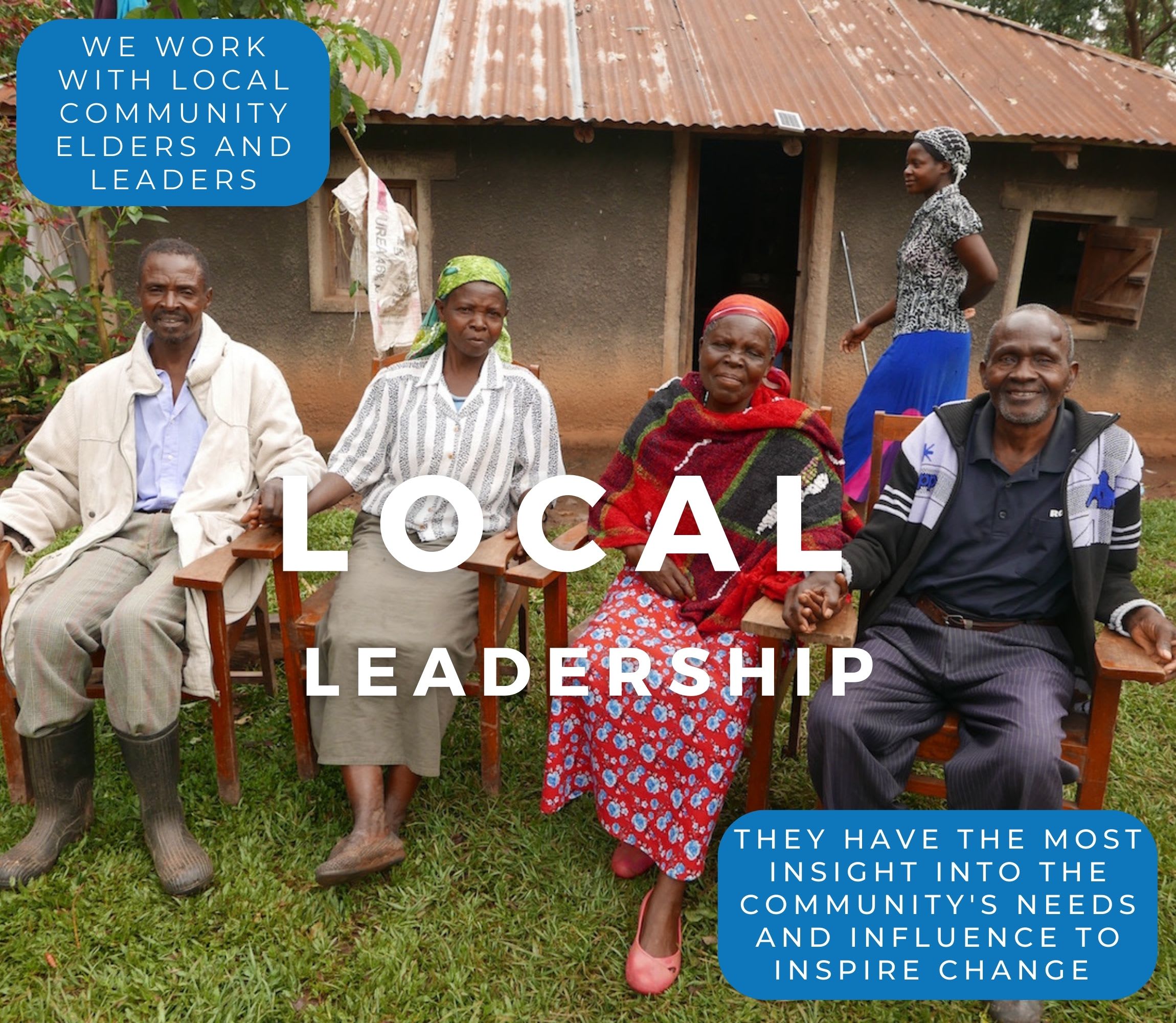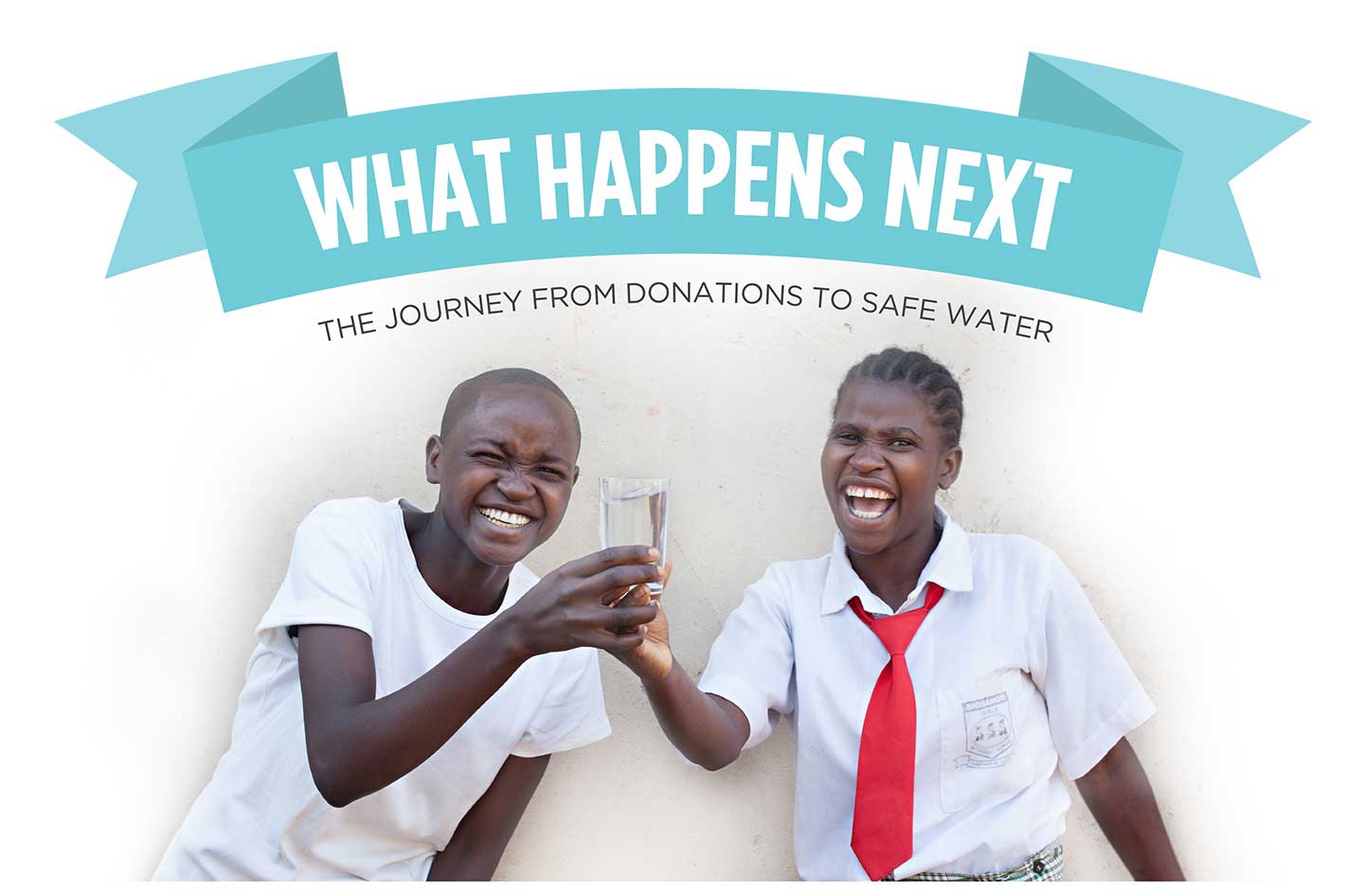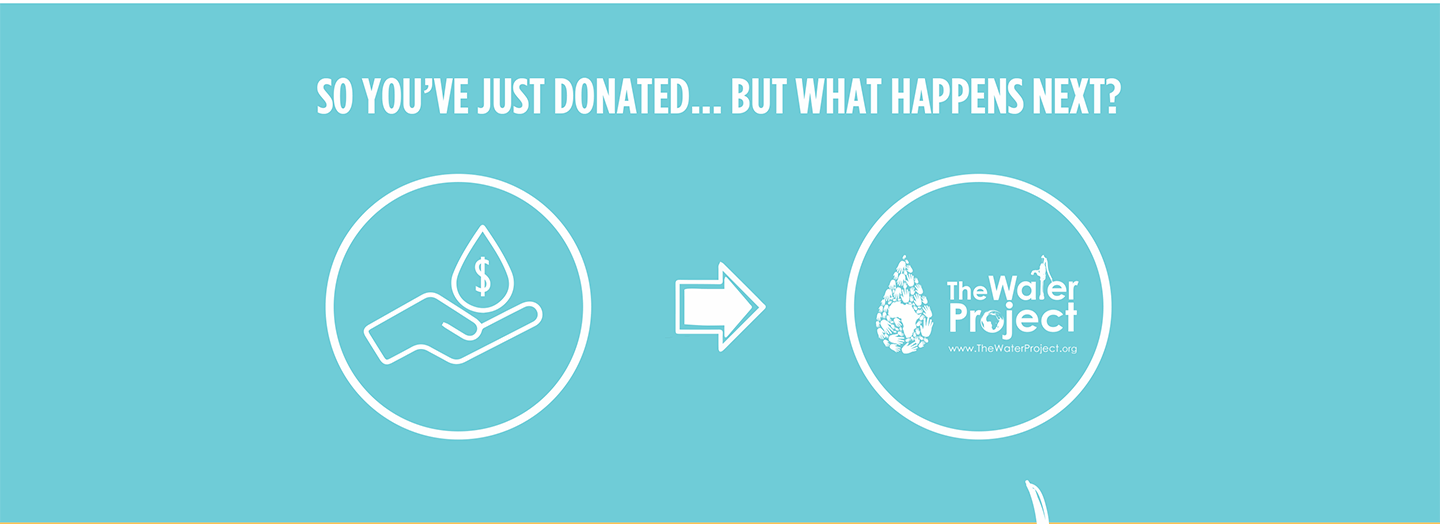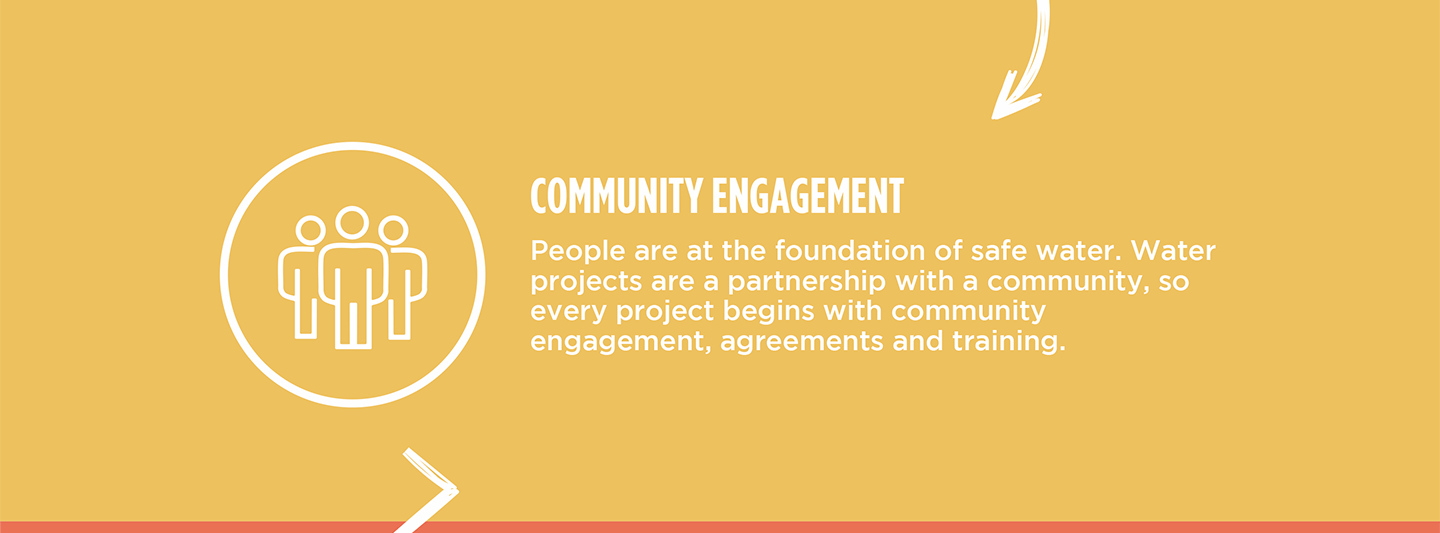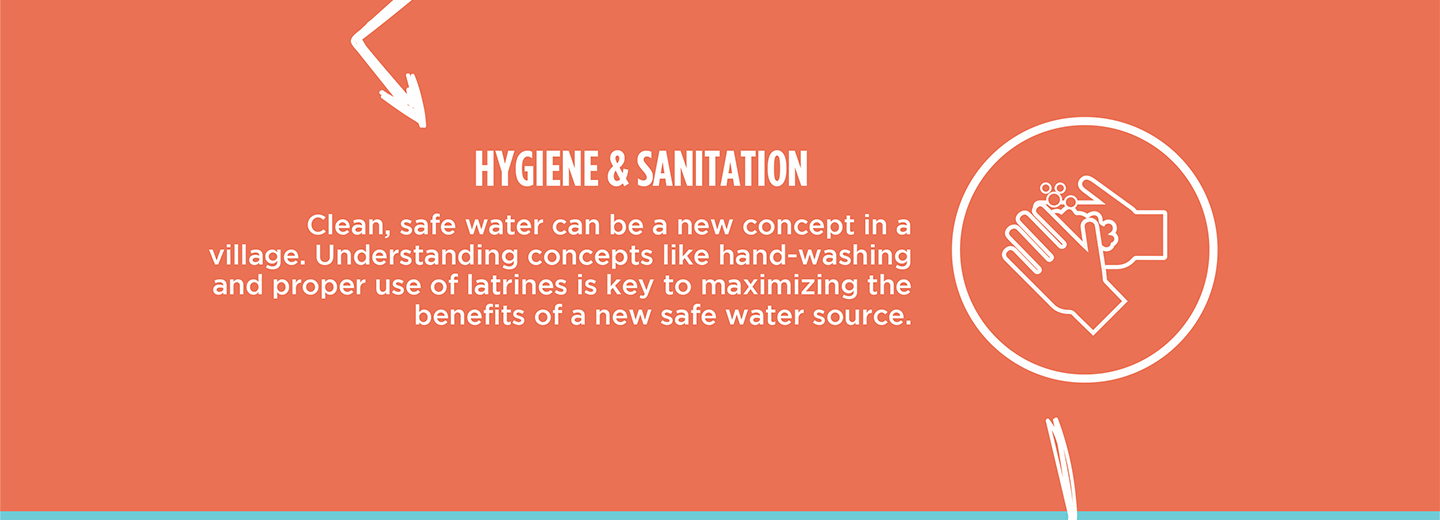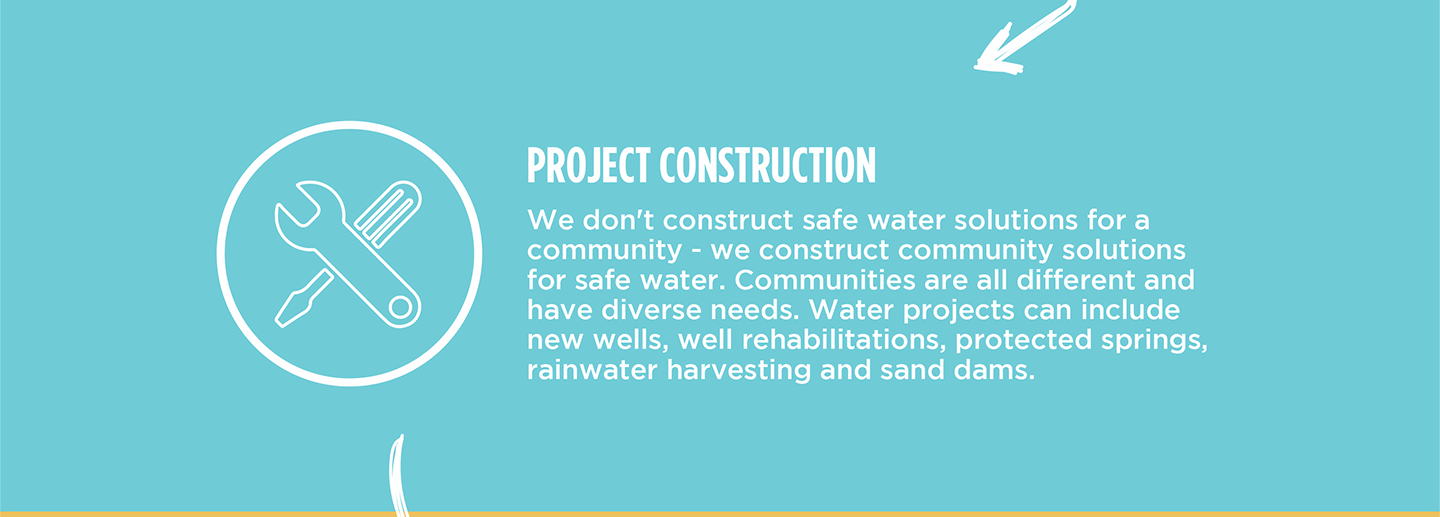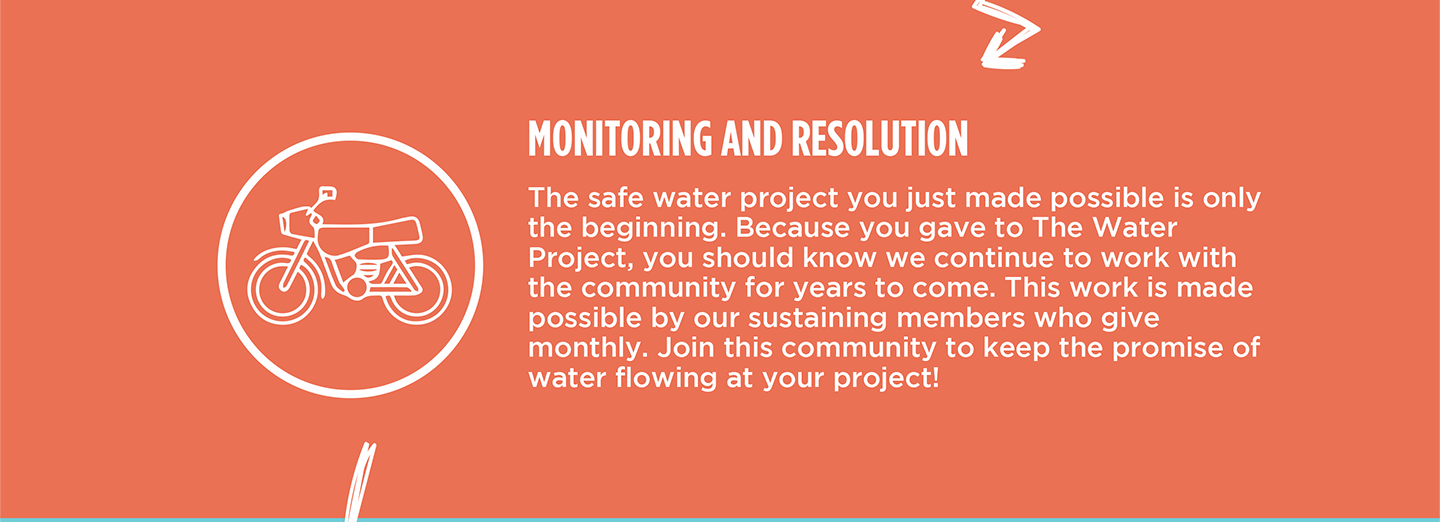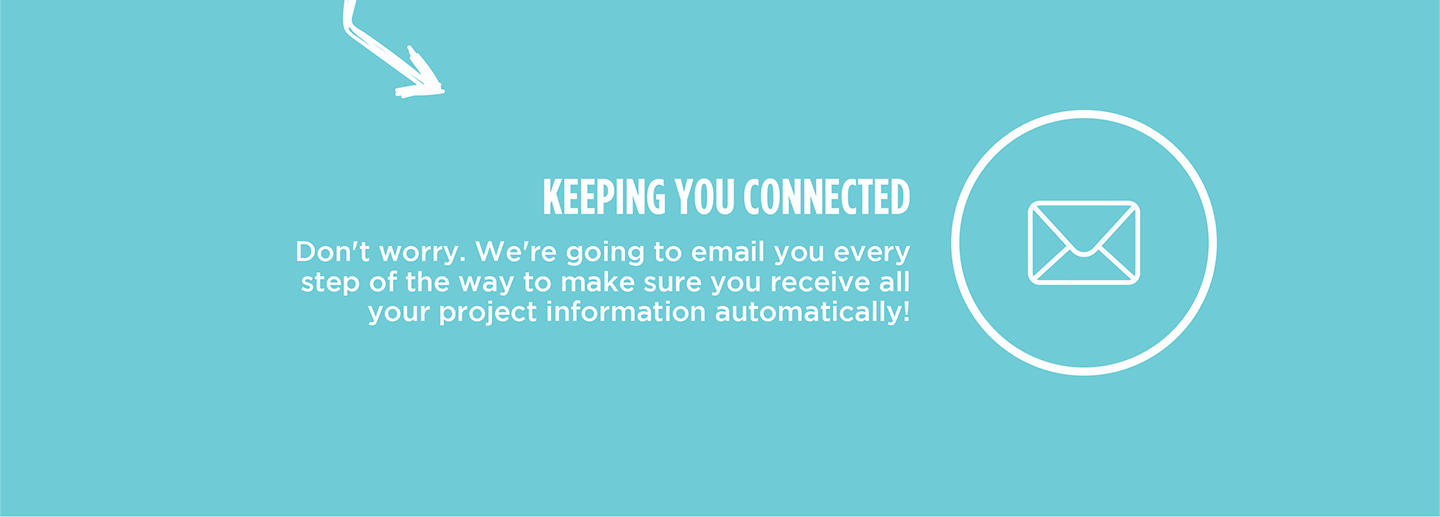May, 2020: COVID-19 Prevention Training Update at Katung'uli Community
Our teams are working on the frontlines of the COVID-19 pandemic. Join us in our fight against the virus while maintaining access to clean, reliable water.

We are carrying out awareness and prevention trainings on the virus in every community we serve. Very often, our teams are the first (and only) to bring news and information of the virus to rural communities like Katung'uli, Kenya.
We trained community members on the symptoms, transmission routes, and prevention of COVID-19.
Due to public gathering concerns, we worked with trusted community leaders to gather a select group of community members who would then relay the information learned to the rest of their family and friends.

We covered essential hygiene lessons:
- Demonstrations on how to build a simple handwashing station
- Proper handwashing technique
- The importance of using soap and clean water for handwashing
- Cleaning and disinfecting commonly touched surfaces including at the water point.

We covered COVID-19-specific guidance in line with national and international standards:
- Information on the symptoms and transmission routes of COVID-19
- What social distancing is and how to practice it
- How to cough into an elbow
- Alternative ways to greet people without handshakes, fist bumps, etc.
- How to make and properly wear a facemask.
During training, we installed a new handwashing station with soap near the community’s water point.

The line for the handwashing station.
Due to the rampant spread of misinformation about COVID-19, we also dedicated time to a question and answer session to help debunk rumors about the disease and provide extra information where needed.
Water access, sanitation, and hygiene are at the crux of disease prevention. You can directly support our work on the frontlines of COVID-19 prevention in all of the communities we serve while maintaining their access to safe, clean, and reliable water.

June, 2018: Katung'uli Community Sand Dam Complete
Katung'uli Community, Kenya now has a new source of water thanks to your donation. A new sand dam was constructed on a sandy riverbed, which will build up and to raise the water table and naturally filter water. Community members also attended hygiene and sanitation training, and plan to share what they learned with their families and neighbors.
New Knowledge
The main contact for the group was field officer Ruth Mwanzia, who is responsible for all the self-help groups in this area. She reached out to the group's chairman who worked with the other members to decide on the best training date. They also agreed on the venue, which was at the nearby shopping center where one of the members had their own shop. Out of the 35 members, 30 attended. The other five were reportedly working on their farms to take advantage of the rainy weather.
The trainer highlighted:
– Ways to treat water
– Proper handling and storage of drinking water
– Protecting water sources
– Food preparation
– Building and using a dish drying rack
– Building and using a handwashing station
Participants' favorite topics were on water hygiene and making soap. For water hygiene, different methods of water treatment were explained along with their pros and cons. They were interested in learning the proper dosage for water guard, and also how to use the local moringa seed to purify water. Though we had taught people how to make soap a while ago, the group members requested a review. A member told us, "Though it is the second time we learned how to make soap, the procedure has now been well understood; it was not so clear to us but now we can make quality soap."

Being the second year of our program with Kianguni Self-Help Group, we reviewed their action plan for making improvements both on the community level and household level. Mr. Munyao Muia said, "We have not been serious in the installation of hygiene infrastructures, like for instance, construction of tippy taps (handwashing stations) and using soap to wash our hands, and water treatment. Now that we have learned the diseases that can be transmitted through taking untreated water, we will improve on that and the rate of diseases will be lowered. Because of the soap, handwashing with soap will be practiced throughout and we will teach the other family members on the same."

Very few people were practicing water treatment since they learned about it last year. Thus, a session was devoted to teaching why and how to do so.
Sand Dam
The sand dam was constructed during the rains, and some days it would rain the entire day. Nonetheless, community members started the process by gathering all of the supplementary materials like sand, stones, and water. The collection of the raw construction materials takes longer than the actual construction. For a super large sand dam, materials collection could take up to four months.
Since it was rainy, many of the farmers realized the opportunity to get good work done on their farms. They were torn between getting this work done to earn money for their families and working on the sand dam for its long-term benefits. More people chose their farms, which led to a low number of volunteers to help our artisans at the sand dam. Anyways, it would rain so much at times that the sandy riverbed would flood, delaying any further sand dam progress.
Siting and technical designs were drawn and presented to the Water Resources Management Authority (WRMA) and a survey sent to the National Environment Management Authority (NEMA) for approval before construction started. Once approved, we established firm bedrock at the base of the sand dam wall. In the absence of good bedrock, excavation is done up to a depth at which the technical team is satisfied that the ground is firm enough to stop seepage.
Then mortar (a mixture of sand, cement, and water) is mixed and heaped into the foundation. Rocks are heaped into the mortar once there is enough to hold. Barbed wire and twisted bar are used to reinforce the mixture. Once the foundation is complete, a skeleton of timber is built to hold the sludge and rocks up above ground level. The process is then repeated until a sufficient height, width and length are built up. The vertical timber beams are dismantled and the dam is left to cure.

Despite challenges, the group members persevered and finished a sand dam 63.2 meters long and 4.25 meters high. It took a whopping 585 bags of cement to build.

The bags of cement delivered to the sand dam construction site.
As soon as it rains, the dam will begin to build up sand and store water. With this water, the surrounding landscape will become lush and fertile. It could take up to three years of rain (Because sometimes it only rains once a year!) for this sand dam to reach maximum capacity. This is well worth the wait in such a water scarce region. Mr. Muia said, "This project will be a big revelation to the community. It will hold more water and top up on the already existing water from our first sand dam. Water access in the whole village will be greatly improved as many people will now be served by the water points. It is the joy of everyone to have water at these close ranges."

Sand dam construction was undertaken simultaneously with the construction of a hand-dug well which gives community members a safe method of drawing water. As the sand dam matures and stores more water, more of it will be accessible as drinking water from the well.
To see that hand-dug well, click here.
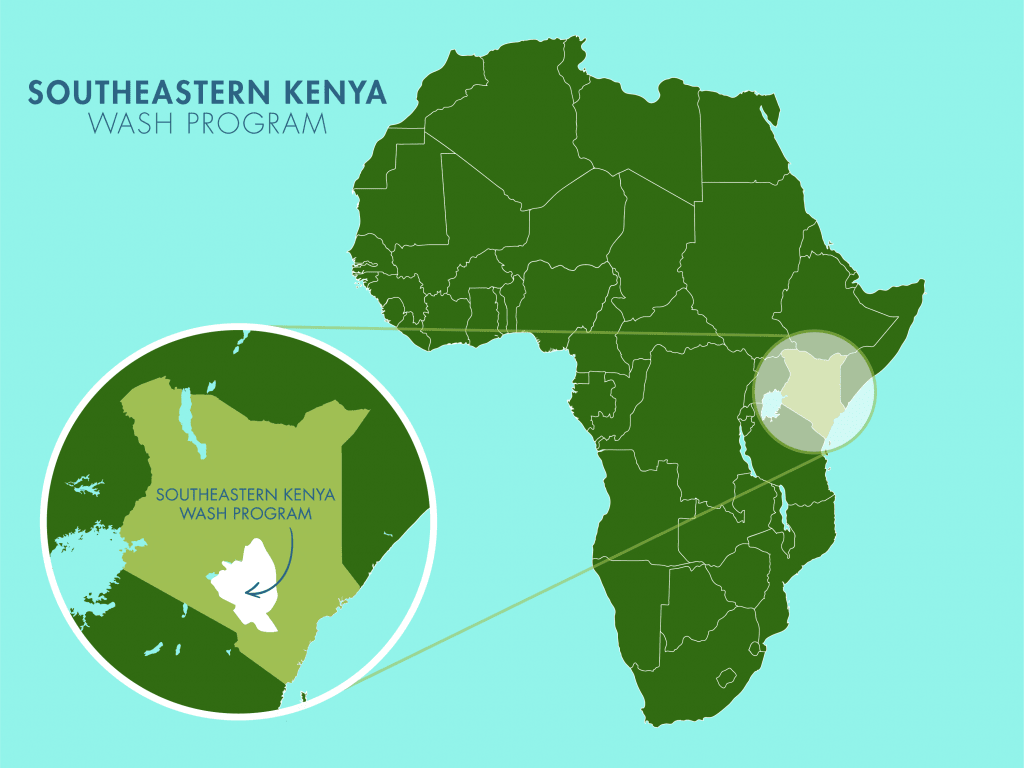
 Sand Dam
Sand Dam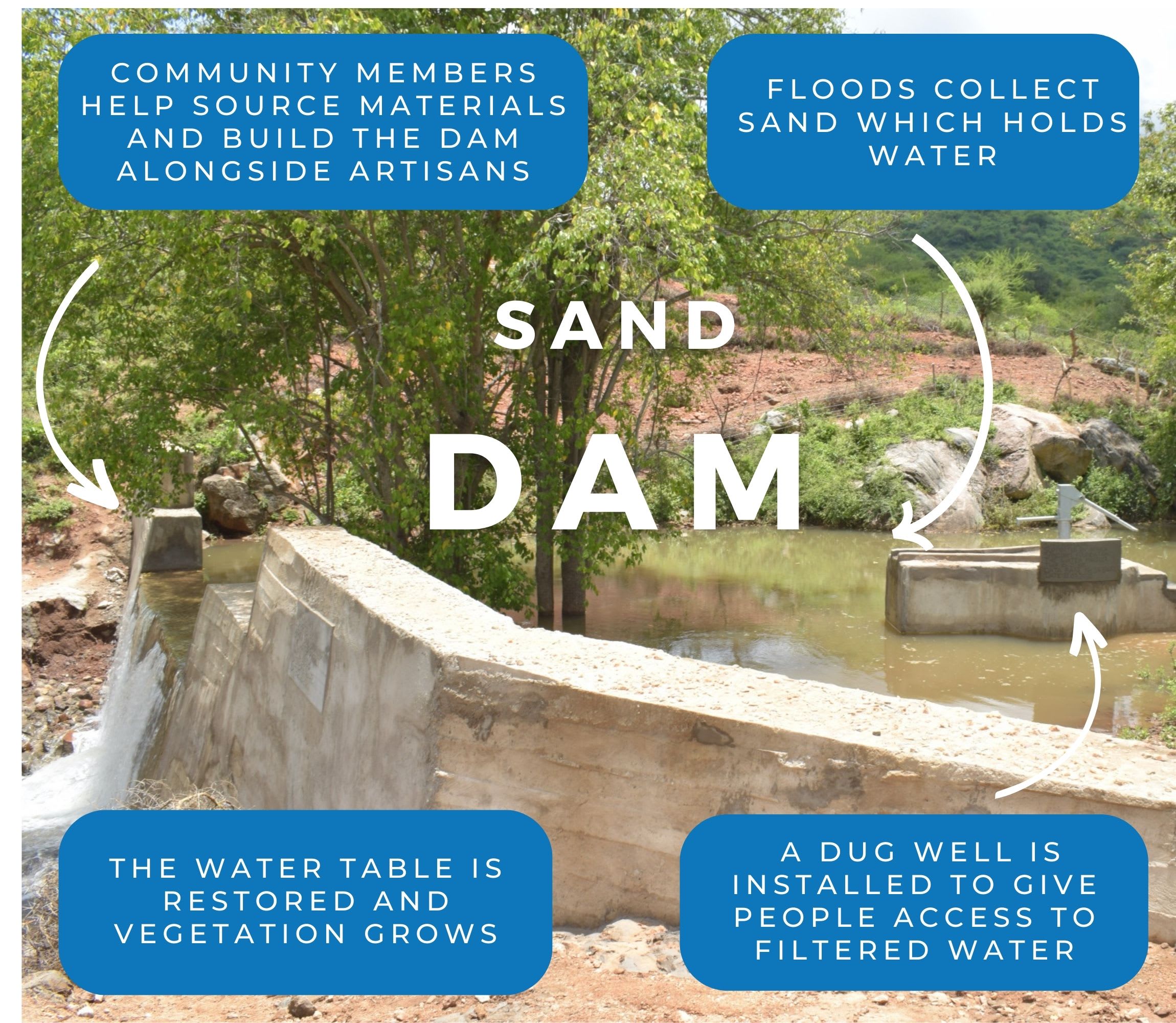
 Rehabilitation Project
Rehabilitation Project

